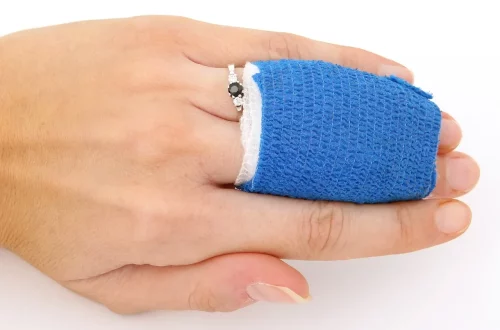
Understanding Brown Recluse Spiders in New Jersey: What You Need to Know
Understanding the presence and behavior of brown recluse spiders is crucial for residents in New Jersey. This spider, known for its distinctive violin-shaped marking on its back, often evokes fear due to its reputation and the potential health risks associated with its bite. While sightings of its kind are not overly common in New Jersey, awareness about its characteristics, habitat, and behavior can help individuals better prepare and respond if they encounter one.
Brown recluse spiders thrive in warm, dry environments, making them more likely to be found in homes than in the wild. They prefer undisturbed areas, often hiding in closets, attics, or basements. Understanding their habits and habitats can significantly reduce the chances of an encounter. Moreover, knowing how to distinguish between brown recluse spiders and other similar-looking species can help prevent unnecessary panic and misidentification.
Residents should also be informed about the potential dangers these spiders pose and the importance of seeking prompt medical attention if bitten. While most bites result in mild symptoms, some can lead to severe reactions. This article delves into the characteristics of brown recluse spiders, their behavior, and how to manage potential encounters, ensuring that New Jersey residents are well-equipped with the knowledge they need to stay safe.
Identifying Brown Recluse Spiders
Identifying brown recluse spiders accurately is essential for understanding how to coexist with them safely. The brown recluse spider, scientifically known as Loxosceles reclusa, is relatively small, with adult specimens typically measuring about 1/4 to 1/2 inch in body length, excluding their long legs. One of the most recognizable features of this spider is the dark violin-shaped marking on its cephalothorax, which is the part of the body that houses the head and thorax.
The coloration of brown recluse spiders can vary from light tan to a darker brown, making them blend in with their surroundings. This camouflage is beneficial for their survival, as it helps them avoid predators. Another distinguishing feature is their six eyes arranged in pairs, unlike most spiders that have eight eyes. This unique eye arrangement can be a key factor in identification.
It is important to differentiate brown recluse spiders from similar-looking species, such as the common house spider or the wolf spider. While these spiders may share some physical traits, understanding their specific features can ease concerns about potential encounters. For example, house spiders tend to have a more rounded body and do not exhibit the same violin marking.
When trying to identify a brown recluse spider, it is crucial to approach with caution. If you suspect you have found one, avoid direct contact and take steps to safely capture it for identification. Using a jar or container can help in this regard. Always remember that while these spiders can be dangerous, they are generally not aggressive and bite only when threatened.
Habitat and Behavior of Brown Recluse Spiders
Brown recluse spiders prefer habitats that provide warmth and shelter, often seeking out undisturbed areas in and around human dwellings. They thrive in places that are dark and dry, such as basements, attics, and closets, as well as in piles of wood, debris, or even within furniture. Understanding their preferred habitat can help residents minimize the chance of an encounter.
These spiders are primarily nocturnal, becoming active during the night when they hunt for food. Their diet mainly consists of small insects, which they capture using a hunting strategy rather than building webs. Brown recluse spiders do not create the typical intricate webs that many other spider species do; instead, they rely on their keen hunting skills to catch prey.
During the day, brown recluse spiders remain hidden in their shelters, coming out at night to forage for food. This behavior contributes to their reclusive nature, as they avoid human interaction whenever possible. While they can be found both indoors and outdoors, they are more commonly encountered in residential areas where they can find suitable shelter.
One interesting aspect of their behavior is their ability to survive in harsh conditions. Brown recluse spiders can go for long periods without food or water, allowing them to endure in environments that may not be ideal. This resilience makes them difficult to eliminate once they establish a presence in a home, necessitating proactive measures for management and control.
Health Risks Associated with Brown Recluse Spiders
While brown recluse spiders are not aggressive, their bites can pose significant health risks, making it essential for residents to be aware of their potential dangers. The venom of a brown recluse spider contains enzymes that can cause tissue necrosis, leading to serious medical conditions in some cases. Symptoms of a bite can vary widely depending on individual reactions and the severity of the bite.
Common immediate symptoms include redness, swelling, and pain at the site of the bite. As time progresses, the area may develop a blister or ulcer, and systemic symptoms can appear, such as fever, chills, and nausea. In severe cases, the tissue around the bite may begin to die, requiring medical intervention. It is essential to monitor any bite closely and seek medical attention if symptoms worsen or do not improve.
Not all bites lead to severe reactions. In fact, many people may experience mild symptoms that resolve on their own without complications. However, it is crucial to err on the side of caution and consult a healthcare professional if bitten by a suspected brown recluse spider. Early intervention can help mitigate the risks associated with their bites.
In addition to physical symptoms, the psychological impact of a brown recluse spider encounter should not be overlooked. The fear and anxiety surrounding these spiders can lead to stress and discomfort in affected individuals. Education and awareness can play significant roles in alleviating these concerns, helping residents feel more secure in their homes.
Preventing Encounters with Brown Recluse Spiders
Preventing encounters with brown recluse spiders involves a combination of education, awareness, and proactive measures around the home. By understanding their habits and preferred environments, residents can take steps to minimize the likelihood of an encounter and reduce the chances of a bite.
First and foremost, maintaining a clean and clutter-free living space is crucial. Regularly cleaning areas such as attics, basements, and closets can deter brown recluse spiders from making a home there. Removing clutter and debris, such as piles of clothes, cardboard, or wood, will eliminate potential hiding spots for these spiders.
Sealing cracks and crevices around windows, doors, and the foundation of the home can also help prevent spider entry. Using caulk or weather stripping can create a barrier that makes it more challenging for these spiders to gain access. Additionally, ensuring that screens on windows and doors are intact can further reduce the likelihood of encounters.
Outside the home, keeping gardens and yards well-maintained can help prevent spider populations from flourishing. Regularly mowing the lawn, trimming vegetation, and removing piles of leaves or debris can make the environment less inviting for brown recluse spiders.
Finally, educating family members about safe practices, such as not putting on clothing or shoes without checking for spiders, can significantly reduce the risk of bites. By fostering awareness and implementing preventive measures, residents can coexist safely with brown recluse spiders and enjoy their homes with peace of mind.
**Disclaimer**: This article is for informational purposes only and should not be considered medical advice. If you experience a bite or any medical issues, please consult a healthcare professional for guidance.




